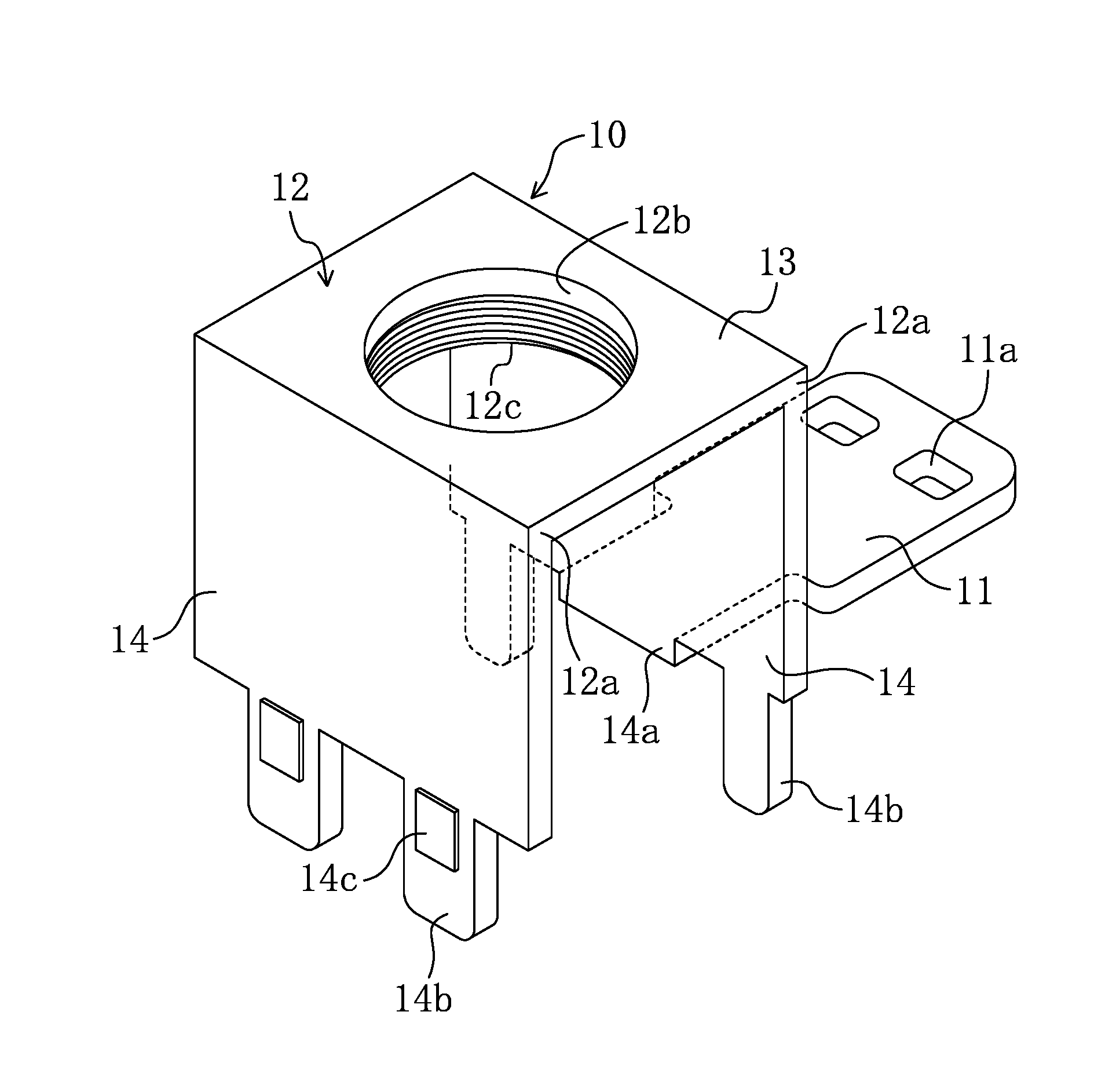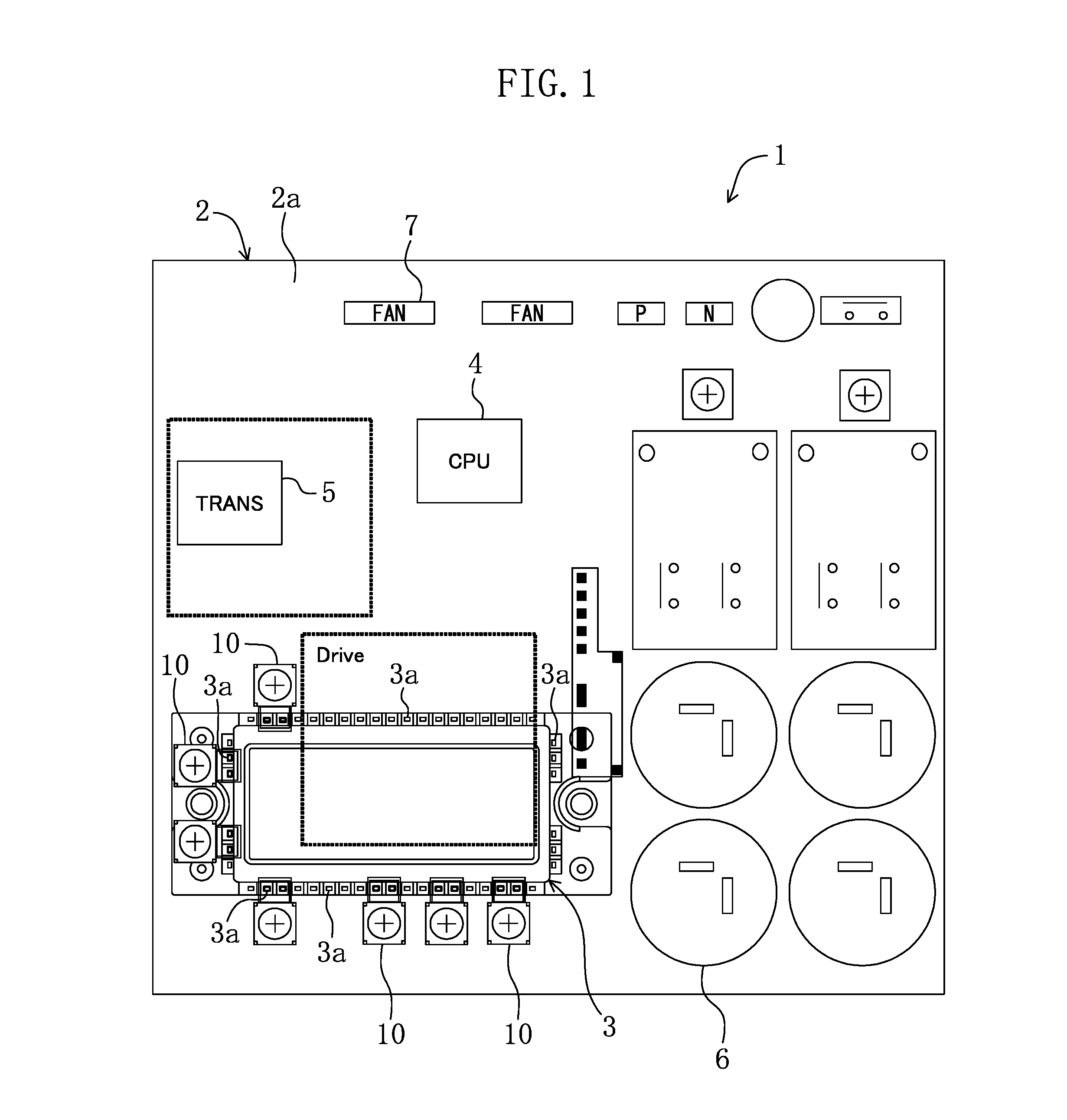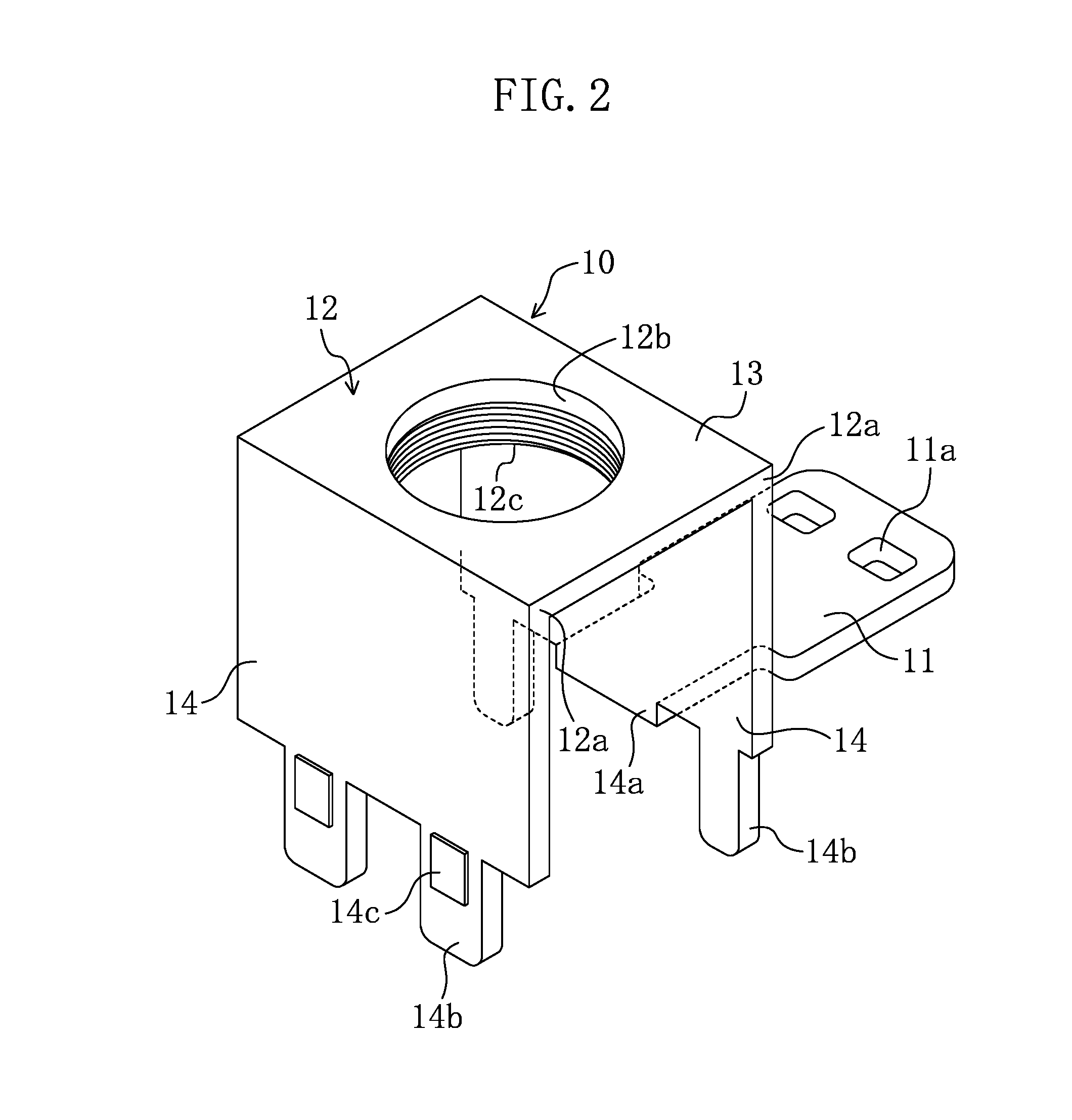Connecting member of electrical circuit
a technology of connecting member and electrical circuit, which is applied in the direction of fixed connection, high current circuit adaptation, and incorporation of printed electric components, etc. it can solve the problems of inability to use printed circuit boards up to rated current, inapplicability, and inability to increase the thickness of copper foil, so as to reduce or prevent the increase in cost, increase the thickness or width of copper foil, and increase the size of printed circuit boards
- Summary
- Abstract
- Description
- Claims
- Application Information
AI Technical Summary
Benefits of technology
Problems solved by technology
Method used
Image
Examples
first embodiment
of the Invention
[0092]A first embodiment of the invention will be described. The first embodiment relates to a printed circuit board unit used for a control device of a refrigeration apparatus (air conditioning apparatus).
[0093]FIG. 1 is a plan view of a printed circuit board unit (1). The printed circuit board unit (1) is configured by mounting a power-supply circuit element such as a power module (inverter module to be connected to an external power supply) (3) and other electronic components (4, 5, 6, 7) on a printed circuit board (2). Since the power module (3) is positioned on the back side of the printed circuit board (2) as viewed in the figure, there are parts which should be actually indicated by a dashed line. However, for the sake of simplicity, such parts are indicated by a solid line in the figure. The electronic components (4, 5, 6, 7) of the printed circuit board (2) includes, e.g., a CPU (central processing unit) (4), a transformer (5), capacitors (6), and connectors...
second embodiment
of the Invention
[0143]A second embodiment of the present invention will be described.
[0144]The second embodiment illustrated in FIGS. 12(A) and 12(B) has a two-piece structure of a terminal base (connecting member). FIG. 12(A) is a cross-sectional view of a main section with the terminal base being connected, and FIG. 12(B) is a plan view.
[0145]A terminal base (20) specifically includes a first member (20a) with a terminal connecting section (21) and a wire connecting section (22); and a second member (20b) supporting the first member (20a), and attached to a printed circuit board (2).
[0146]The first member (20a) is formed by bending flat-bar-like conductive metal material having a constant width. The first member (20a) includes the wire connecting section (22) to be mounted on and fixed to the second member (20b); a connecting section (25) downwardly extending from one end of the wire connecting section (22) at 90°; and the terminal connecting section (21) extending from a lower en...
third embodiment
of the Invention
[0163]A third embodiment of the present invention, which is illustrated in FIGS. 14(A) and 14(B) will be described. FIG. 14(A) is a cross-sectional view of a main section, which illustrates a connection state in the present embodiment, and FIG. 14(B) is a plan view.
[0164]The third embodiment is an example in which an approximately flat terminal plate (30) is used as a connecting member for connecting a circuit element (power module) of an electrical circuit including a printed circuit board (2), to an electrical wire (8).
[0165]The terminal plate (30) is formed by pressing flat-bar-like conductive metal material having constant width. The terminal plate (30) includes, at one end, a terminal connecting section (31) to be directly connected to terminal pins (3a) of the circuit element such as a power module (3); and, at the other end, a wire connecting section (32) to be connected to the electrical wire (8). The terminal connecting section (31) and the wire connecting s...
PUM
 Login to View More
Login to View More Abstract
Description
Claims
Application Information
 Login to View More
Login to View More - R&D
- Intellectual Property
- Life Sciences
- Materials
- Tech Scout
- Unparalleled Data Quality
- Higher Quality Content
- 60% Fewer Hallucinations
Browse by: Latest US Patents, China's latest patents, Technical Efficacy Thesaurus, Application Domain, Technology Topic, Popular Technical Reports.
© 2025 PatSnap. All rights reserved.Legal|Privacy policy|Modern Slavery Act Transparency Statement|Sitemap|About US| Contact US: help@patsnap.com



